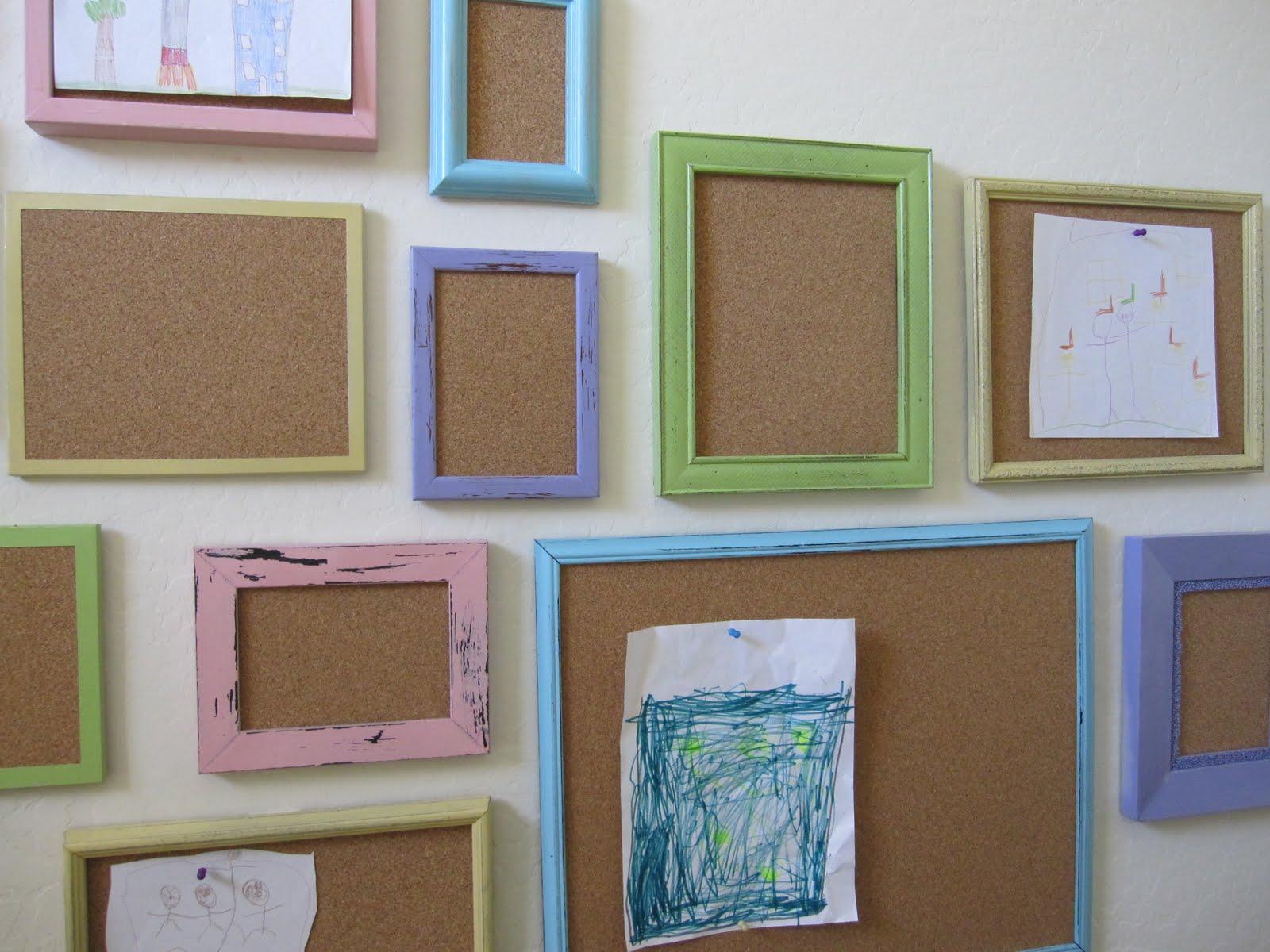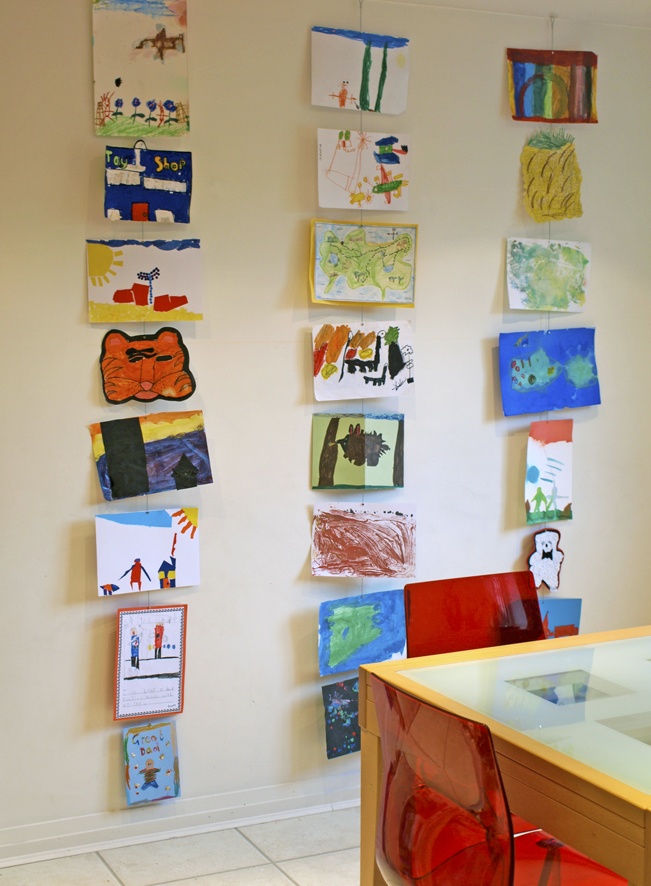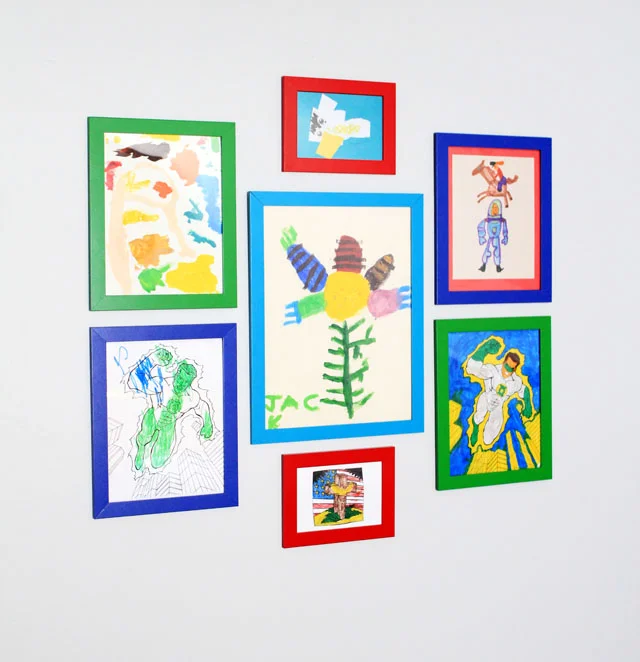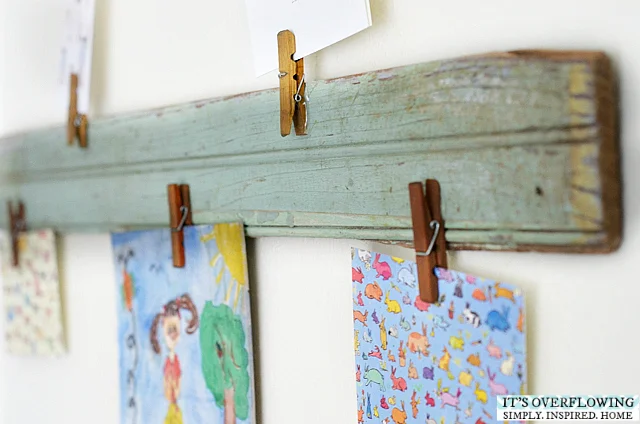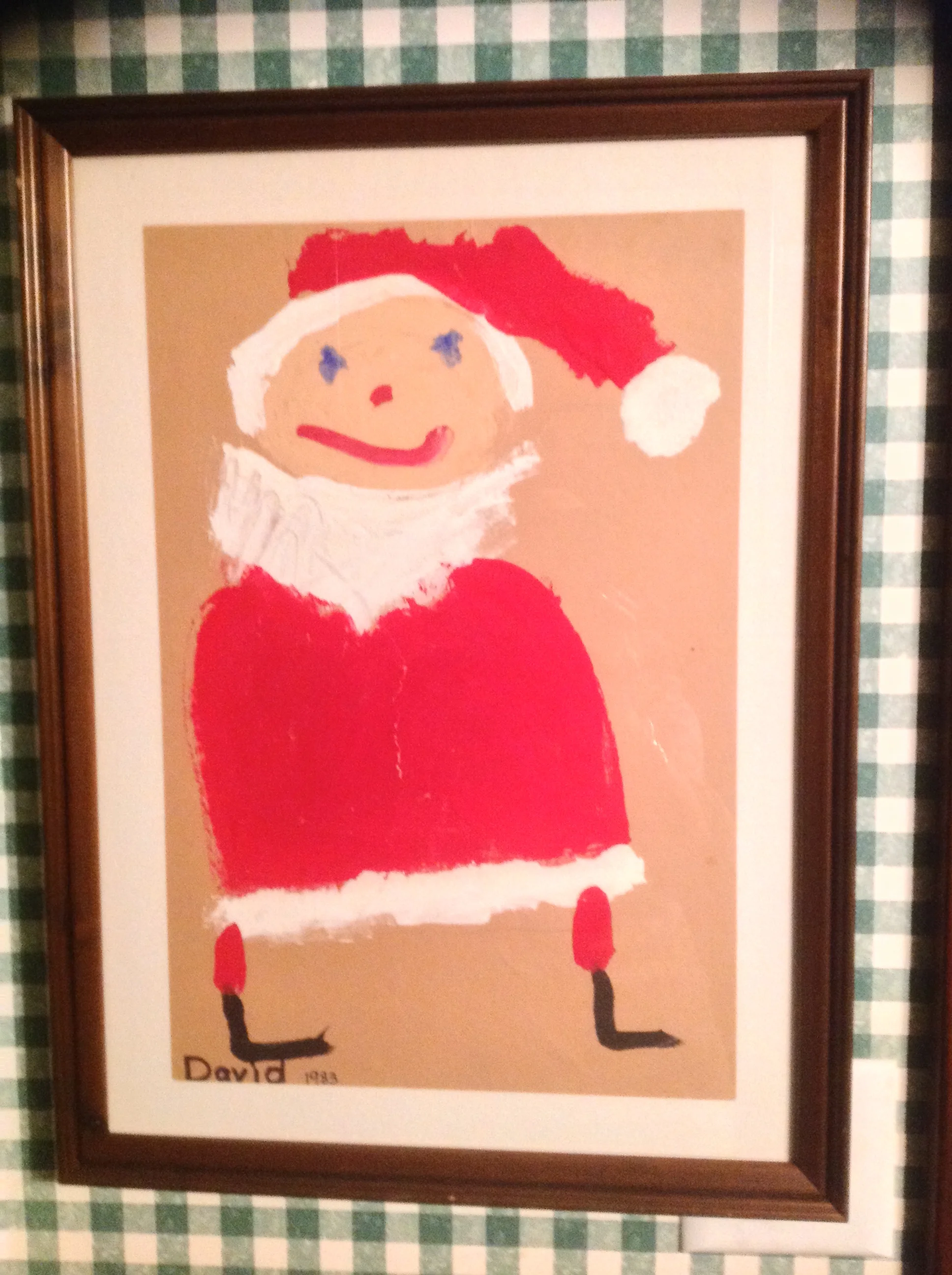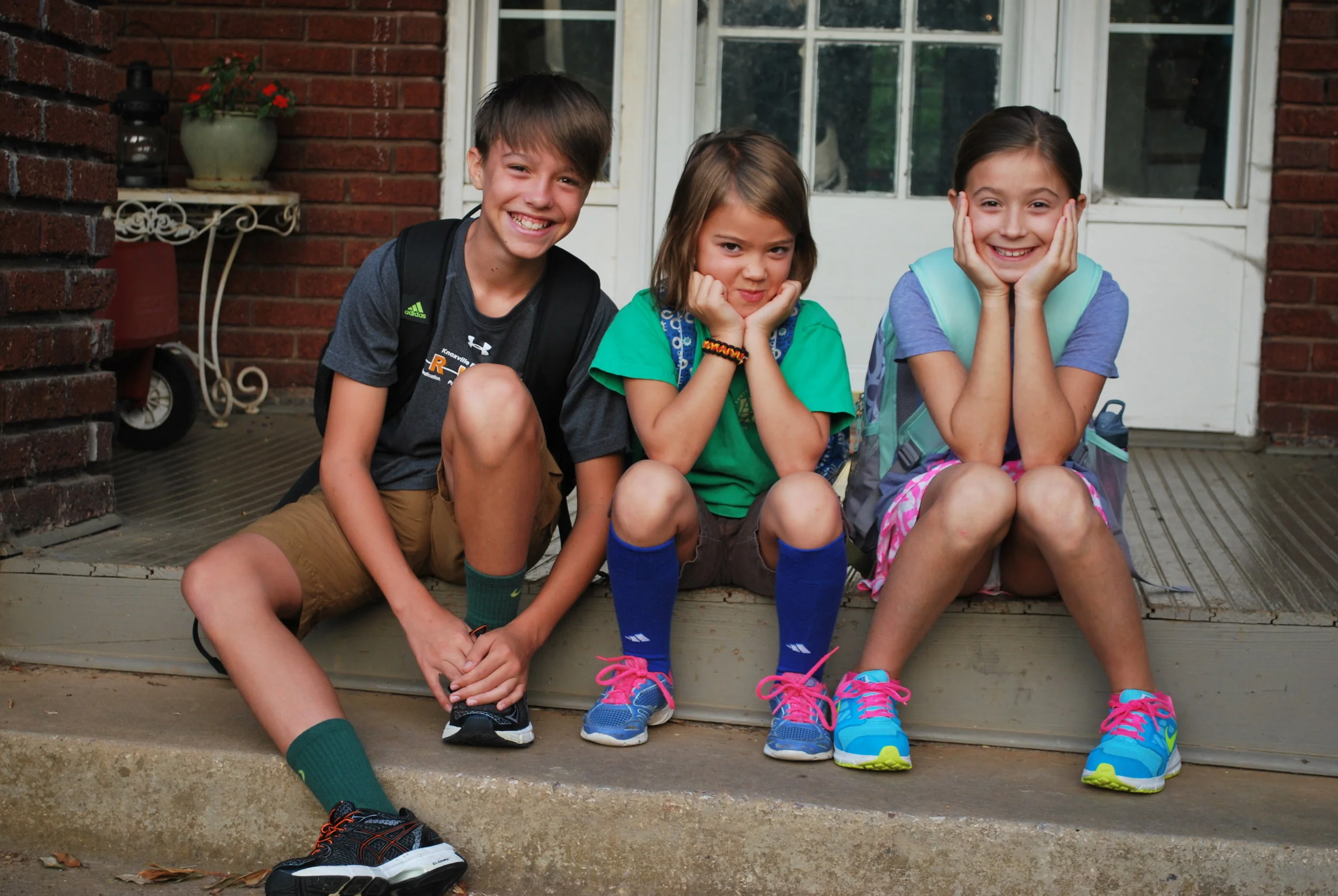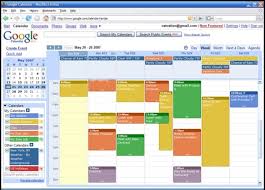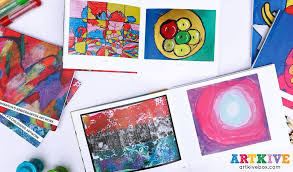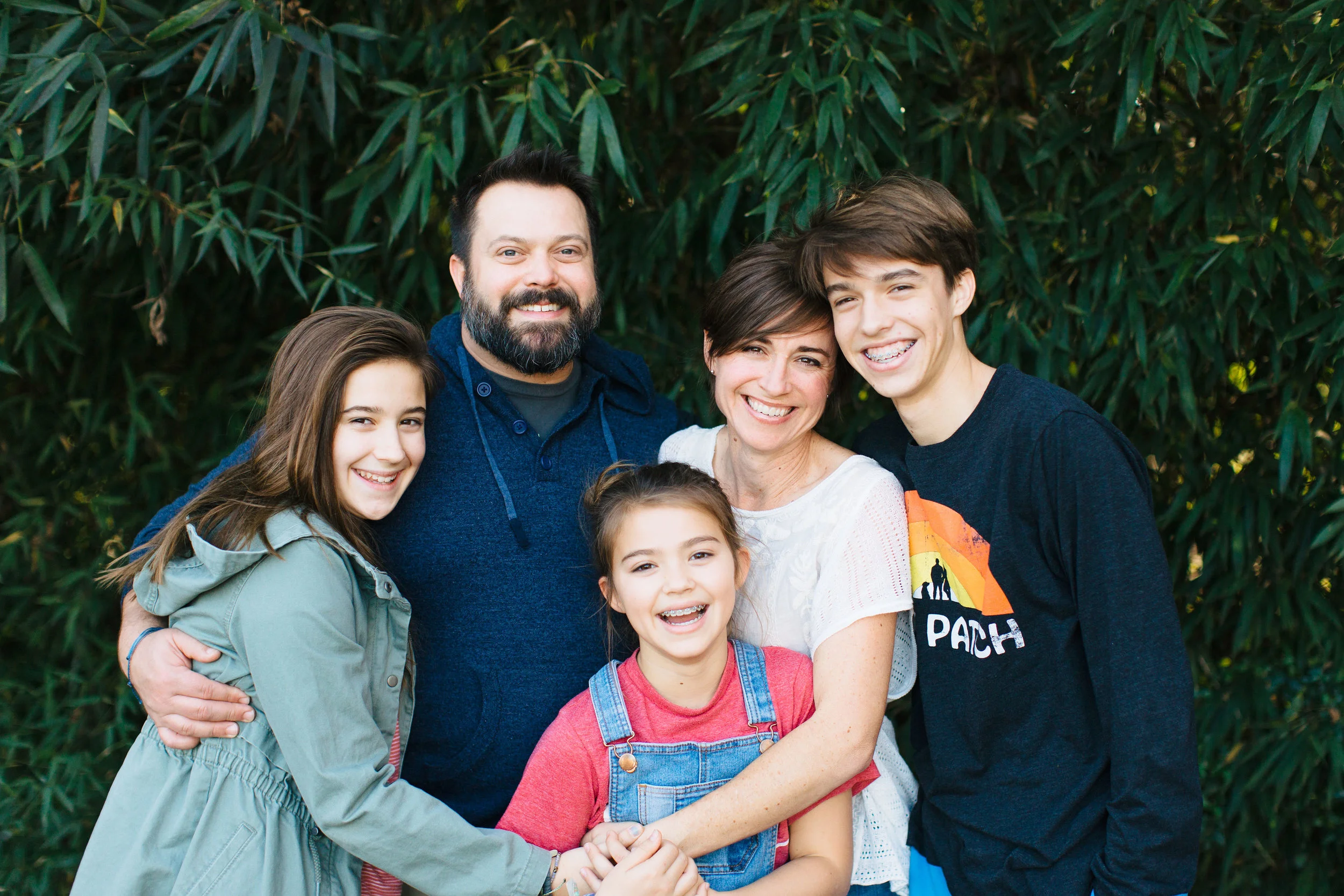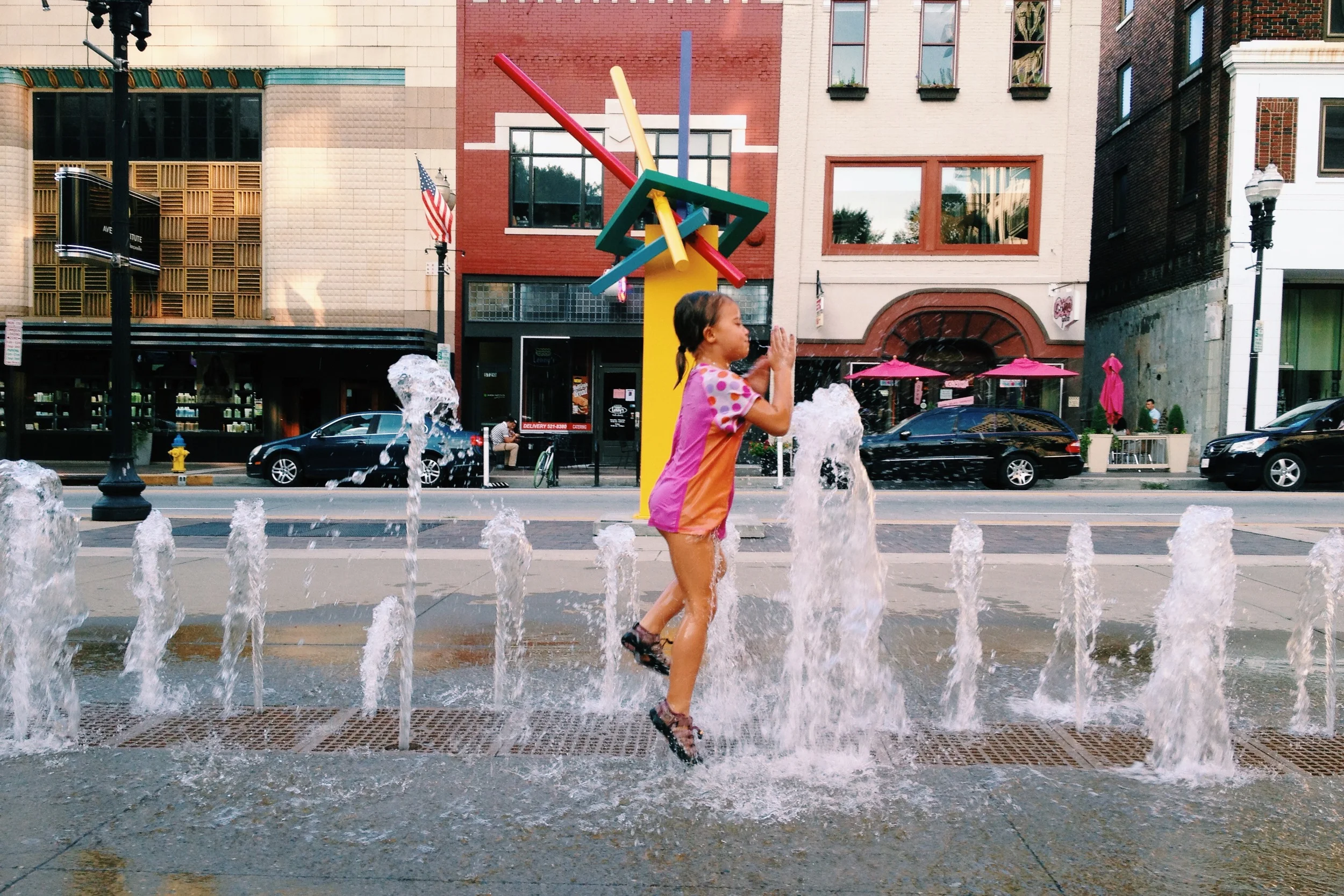10 Ways to Display Kids Artwork
We recently heard a neighbor friend say that her quarantine home looks like “a craft store exploded inside.” Can any of you with small kids else relate?? So, what should we do with all those newly created art masterpieces from our kiddos? We want to celebrate all their little creations!
Instead of just stashing all their art in a folder or adding it to "the pile," here are 10 creative & manageable ways to bring some color into your home, celebrate the seasons, & show off your kids' imagination through art.
1. Use tacks on a wall that's not front and central in your home.
So this first one's not rocket science, but it's what works in our home. Our laundry room is on the main level & has gray walls so the art can really pop! I (or my kids) just rotate their art 2-3 times a year in this room leaving tiny holes from the tacks. The way I look it, when the art stops coming home someday, I'll be ready to repaint the room anyway, but until then, I get to be reminded of these little people I love so much while I'm trying to find that missing sock or checking their pockets before they hit the washer.
Try these Push Pin Clips
2. Thrift frames with glass removed and cork board added.
This is a great option for a more polished look that keeps it super easy to rotate art. Shannon Makes Stuff has great images for ideas. Let the kids have another art project by painting the frames themselves.
Try this cork board.
3. Have Simply Create Kids create a collage poster of your child's art.
This option is a bit more pricey, but well worth the money to have one piece that speaks for many. My kids would love how professional this art display would make their art look.
4. Create vertical art on a string.
The folks at Artful-Kids used a hanging wire to display art vertically allowing for easy rotation. This is a great option if you're short on wall space.
Use this Hanging Picture Display Holder.
5. Use inexpensive IKEA frames in the color that work for your space.
We love how Amanda Medlin created this wall for her boys' room with multicolored frames, but all white or all black frames would be another great option to showcase your child's art.
6. Clothespins are great for art display.
Aimee of It'sOverflowing.com has a great DIY plan to create a fun clothespin line for your kids to be able to change their own art with ease. HYD helped a client design one similar to this last year & it was a huge hit with their four kids.
Try these mini clothes pins.
7. ArtKive it by photographing your child's art with your smartphone.
This is brilliant. ArtKive has designed an app that allows you to photograph the artwork, upload it, and then turn it into books, gifts, or keepsakes.
8. Mount clipboards to the wall.
HYD loves reclaimed wood projects. These from Old House to New Home are some of our favs. Of course, you could use lots of different styles of clipboards that work best for your space.
9. Professionally frame special holiday pieces.
My thoughtful mother decided to pick a couple of my brother's & my best Christmas creations. My brother's is a Santa with no arms, he's a beauty. I did a lovely manger scene that brings back memories but doesn't come close to the fine artistic ability of my brother. It's been over 30 years since we created them & every year, we reminisce & poke fun at each other when mom hangs them. I love them!
10. Keep it simple with a line of twine.
Nothing too fancy here. Just find a color of twine or string that works for your space & use clothespins, paper clips, or even colorful hair clips to hang the art. The image above is our favorite using the spools as the anchors to hang. I have a friend who uses the twine method above her kitchen sink with smaller art pieces & it's so cute. She uses her childs' art in lieu of a curtain valance.



